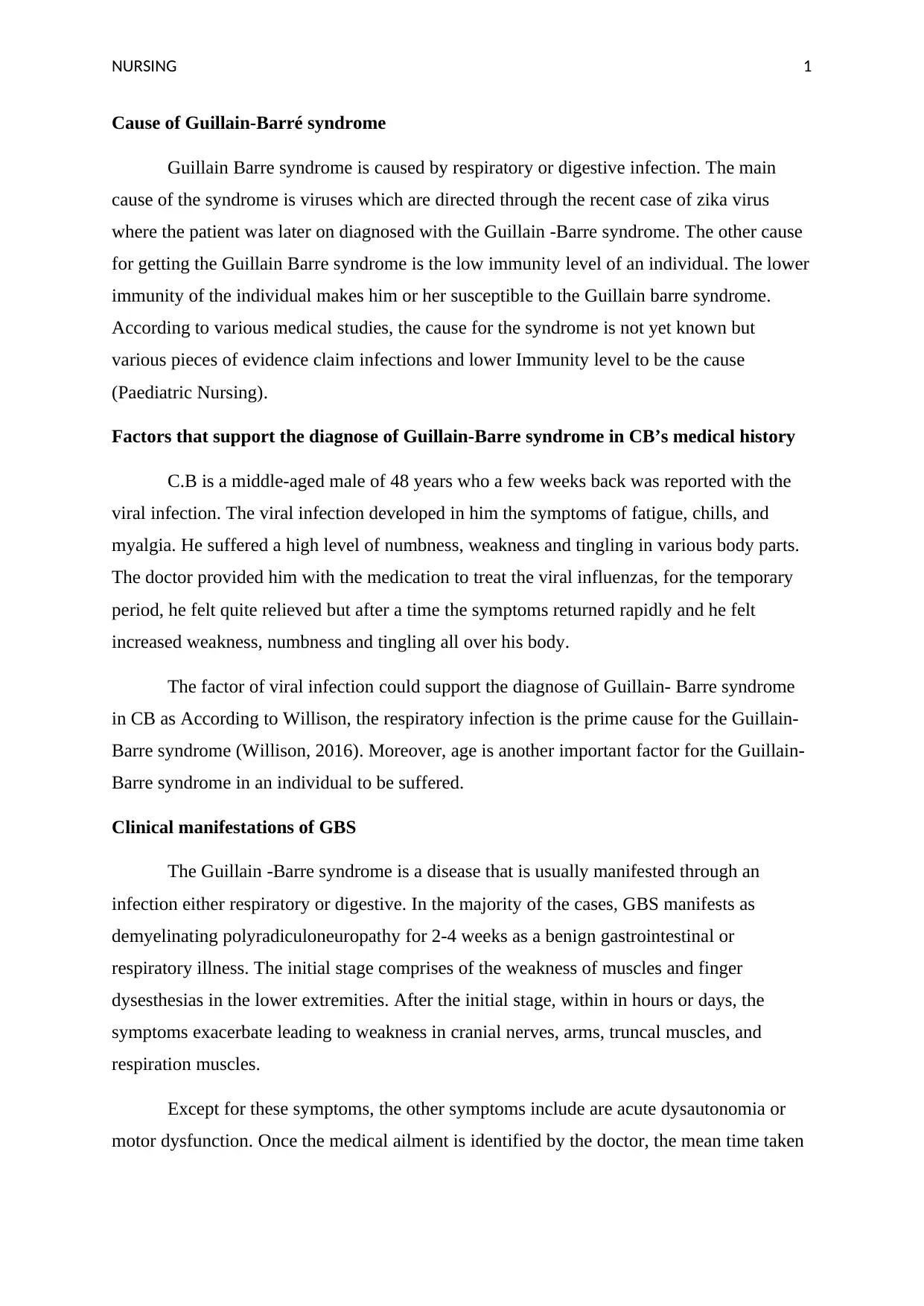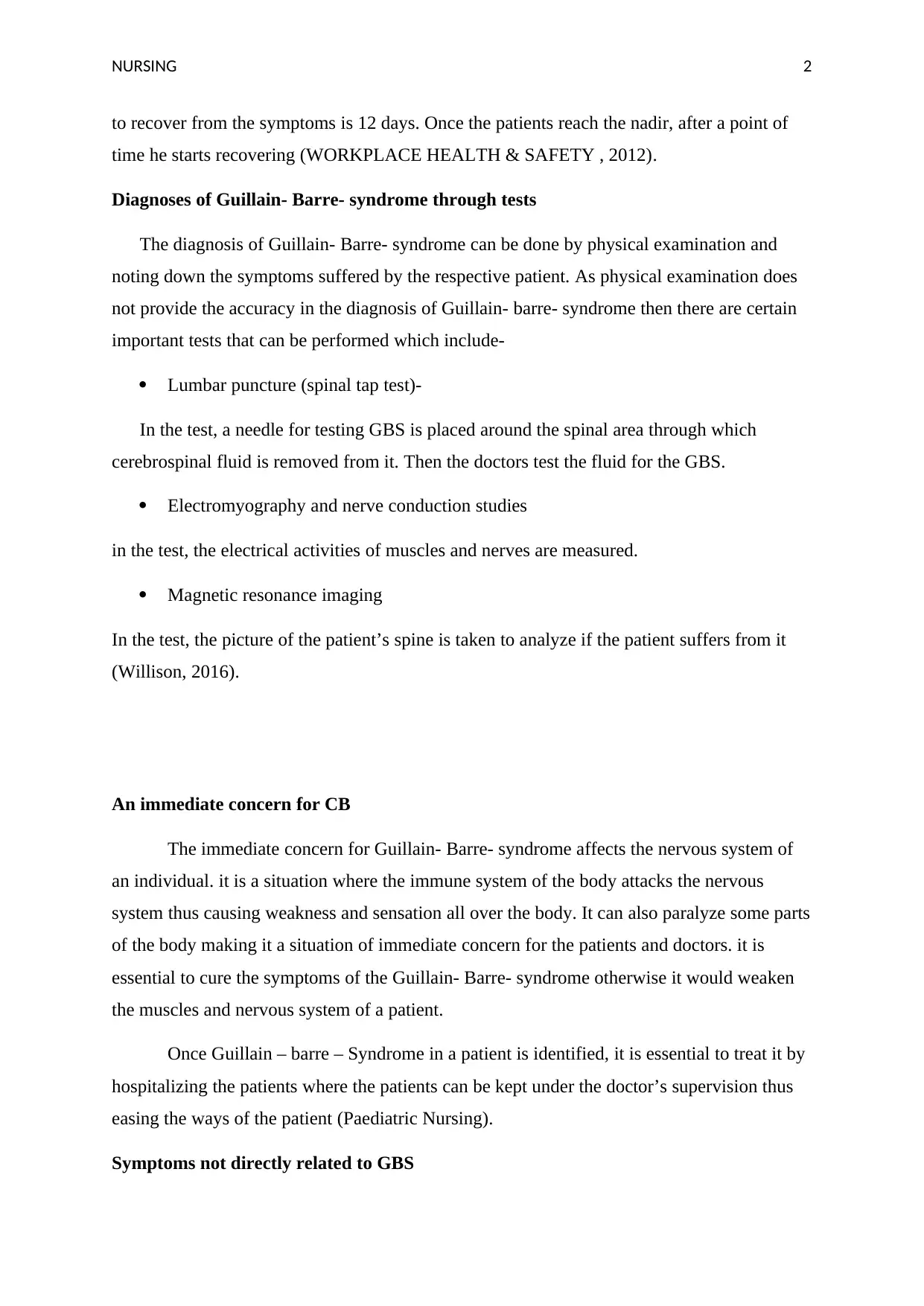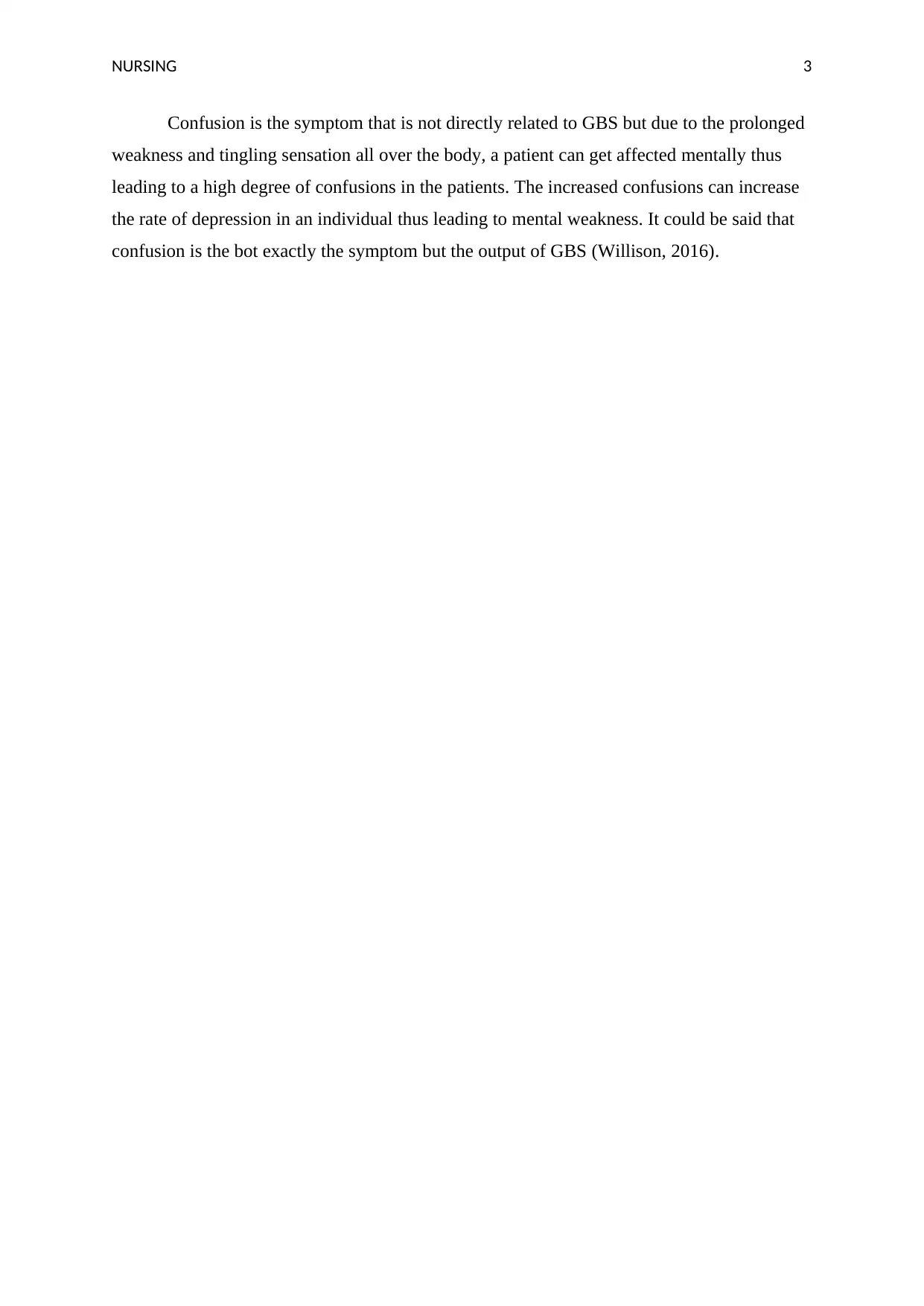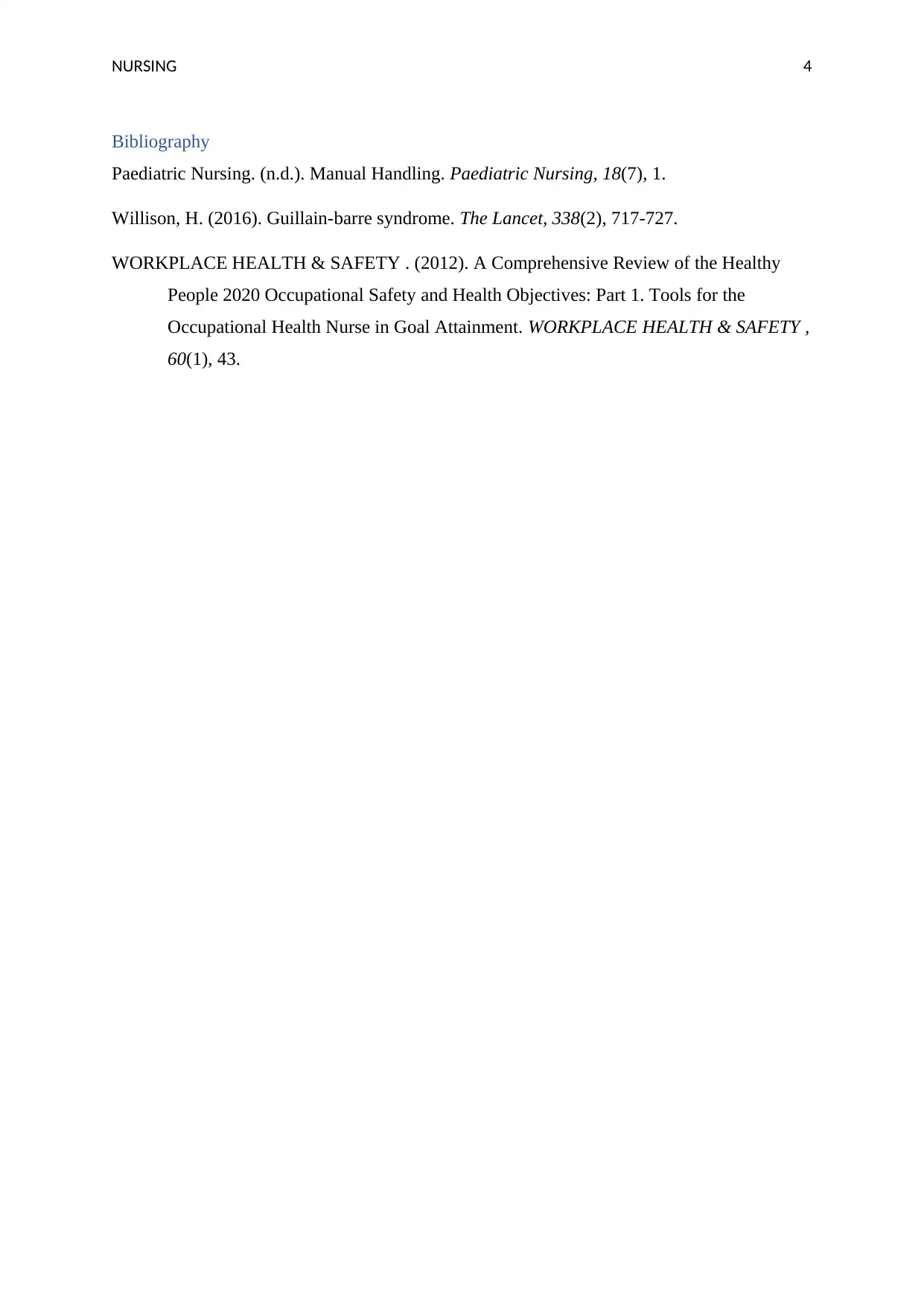NURSING 2: Case Study Analysis of Guillain-Barre Syndrome
VerifiedAdded on 2022/08/25
|5
|919
|20
Case Study
AI Summary
This case study focuses on a 48-year-old male, C.B., presenting with symptoms suggestive of Guillain-Barre Syndrome (GBS). The assignment explores the causes of GBS, primarily linking it to respiratory or digestive infections, often triggered by viruses and/or low immunity. C.B.'s medical history of viral influenza, followed by progressing weakness, numbness, and tingling, supports the diagnosis. The case study details the clinical manifestations of GBS, including muscle weakness, dysesthesias, and potential cranial nerve involvement. It outlines diagnostic methods, such as lumbar puncture, electromyography, and MRI. The immediate concern for C.B. is the potential for paralysis due to the syndrome's impact on the nervous system. The study also differentiates between GBS symptoms and those that are indirectly related, such as confusion. The assignment concludes with a bibliography citing relevant medical literature.
1 out of 5





